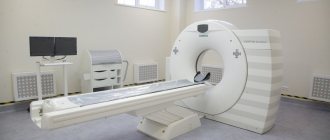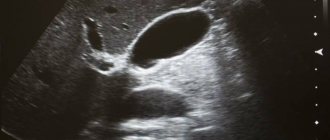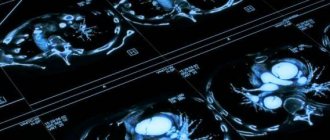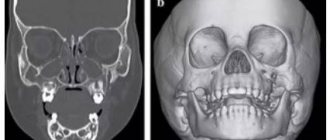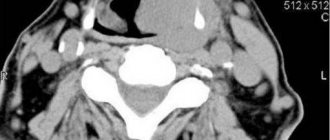FGDS - what is this procedure, preparation, indications and contraindications, complications after
FGDS - what kind of diagnostic procedure it is, preparation for the study with important medical recommendations, indications and contraindications, possible complications, consequences - we will describe all this on the website alter-zdrav.ru.
Such detailed information is often necessary for those patients who are prescribed fibrogastroscopy of the stomach and adjacent organs for the first time. In modern medicine, various diagnostic methods are used to quickly and accurately make a diagnosis. These include radiation diagnostic methods (fluorography, X-ray, angiography, computer, magnetic resonance and nuclear magnetic tomography), direct visual diagnostic methods (fibrogastroduodenoscopy, esophagogastroduodenoscopy, duodenal intubation, coproscopy, etc.).
Quite often, any visual examination of the stomach, based on the insertion of a probe through the oral cavity, is called gastroscopy - FGS (fibrogastroscopy).
Gastroscopy examines the gastric mucosa using a flexible tube (endoscope) inserted into the stomach through the mouth and a camera at its end.
Another type of visual examination - EGDS (esophagogastroduodenoscopy) involves examining the stomach, esophagus, and duodenum with an endoscope.
Visual examination methods allow you to see the condition of the pharynx, esophagus, stomach, duodenum, small and large intestines, gall bladder, take gastric juice, bile, pieces of tissue for analysis, and deliver the medicine precisely. One of the visual inspection methods is the FGDS method.
How long does a gastroscopy take?
The average duration of FGDS depends on several factors: proper training, qualifications and experience of the endoscopist, the type of gastroscopy. The duration of the review gastroscopy procedure of the stomach is no more than 5 minutes, but there may be deviations up or down. For example, if the patient is poorly prepared, it may be difficult to insert an endoscopic device: nausea will occur, which will slow down the advancement of the fibrogastroscope.
Also, when performing FGDS for diagnostic purposes, the duration of the procedure may increase due to the detection of bleeding areas or foreign objects. Most often, the specialist decides to fix the problem in one procedure, which will take him 5 to 7 minutes, and the overall examination takes 10-15 minutes. The same duration applies to FGD of the stomach with biopsy or tests.
The procedure for therapeutic and diagnostic gastroscopy takes the longest, especially if the doctor has to remove benign tumors or suture perforations in the walls of organs. The entire process can take up to 20 minutes, and in particularly difficult situations up to 45 minutes.
Important! You can find out in advance from your doctor how long the FGDS will last. However, in any case, you should expect that the examination will take a few minutes less than what was announced by the doctor, since experts tend to indicate the maximum possible indicators.
What is FGDS
FGDS (fibrogastroduodenoscopy) is a method of examining the surfaces of the esophagus, stomach and the beginning of the duodenum using an endoscope. In gastroenterology it is considered the most informative method for making and clarifying the diagnosis.
The examination is carried out with a thin flexible probe 8-11 mm thick, which is inserted through the mouth and esophagus into the stomach. The image is projected onto the screen. There is a type of examination where a probe is inserted through the nose.
Advantages of the FGDS method:
- information content;
- safety;
- no pain;
- easy to carry.
The design of the device allows for diagnostics, taking tissue samples for analysis, and performing surgical manipulations at the time of the procedure.
What parameters are assessed during FGDS?
In the process of deciphering the results of fibrogastroscopy, the doctor can evaluate in detail the functional and structural features of the organs being examined. So, during diagnosis the following is determined:
- patency of the stomach, esophagus and duodenum;
- the presence of strictures (stenoses, narrowings), scars;
- the consistency of the cardiac sphincter separating the esophagus from the stomach;
- structural changes in the mucosa (inflammation, ulcers, erosion, atrophy, hypertrophy, metaplasia, areas of atypical epithelium);
- the presence of esophagogastric and duodenogastric reflux;
- hernial protrusions of the esophageal opening of the diaphragm;
- diverticulosis - protrusion of the muscular wall of organs;
- neoplasms of various types (polyps, papillomas, tumors);
- stages of gastritis, ulcers and others.
All these diagnostic capabilities of FGS allow us to consider the procedure indispensable in gastroenterology, surgery, oncology, and other branches of medicine related to the treatment of the gastrointestinal tract. Therefore, when prescribing it, you should never refuse, but it is better to read reviews about the examination in order to prepare yourself mentally for visiting the diagnostic room.
Preparing for FGDS of the stomach - several important recommendations
The FGDS procedure requires certain preparation and it is advisable for the patient to familiarize himself in advance with the requirements that must be met in order for the procedure to be successful and with the greatest information content.
So how can you properly prepare for an FGDS? Can you drink water, what can you eat?
Preparation requirements:
- food that takes a long time to digest (nuts, seeds, fatty and fried meat), as well as products containing coloring substances (coffee, chocolate), carbonated drinks, alcohol, smoked foods should be excluded from the diet 2 days before the examination;
- Meals should be taken 12 hours before the procedure, i.e. you need to have dinner the night before at 18.00, excluding raw vegetables and heavy foods;
- do not smoke 3 hours before the test (smoking increases the volume of mucus in the stomach);
- do not take medications in capsules and tablets on the day of the examination; if this is not possible, notify the doctor conducting the examination;
- if you have an allergy, any disease or something is bothering you at the moment, tell your doctor about it;
- do not drink before the procedure (or at least three hours must pass and only clean water in small quantities);
- do not chew chewing gum;
- if the examination is not carried out in the first half of the day, then you need to consult a doctor about the possibility of eating breakfast;
- clothes should be loose so that unnecessary sensations do not interfere;
- you should not use perfume - it interferes with the doctor;
- bring a sheet (on the couch), a towel;
- immediately before the procedure, remove dentures, if any;
- Before the procedure, you need to calm down, set yourself in a positive mood (excessive anxiety can interfere with the examination) and be ready to do everything that the doctor advises.
Proper preparation of the patient and the right attitude will help you complete the examination without any difficulties.
Reviews
Marina, 38 years old: I periodically suffered from quite severe pain in the stomach area, I went to the doctor, they told me that I needed to check my stomach, and they prescribed gastroscopy, that is, “swallowing a probe.” I got ready and came to the hospital with shaking legs. I can’t say that it was very painful and bad, but still my throat hurt for more than a day from the movements of the tube, and during the procedure everything happened - nausea and tears from the eyes.
Peter, 46 years old: I never thought that I could undergo such a procedure, but because of the doctor’s suspicions, I decided to agree to this “execution.” To my and the gastroenterologist’s surprise, everything didn’t even go bad at all. I had no urge to vomit, probably the lidocaine had a good effect on me, no painful sensations in my throat, and even when the doctor just inserted the tube, everything was relatively tolerable. Maybe I was lucky and the doctor was experienced? But in any case, the procedure was completed and the results are in hand.
Victoria, 58 years old: I have been suffering from an ulcer for almost 15 years and undergo FGS almost every year - the doctor is still afraid of its degeneration into an oncological disease. I don’t resist and I’m already used to it. I got ready - I don’t eat for almost half a day, I don’t drink for a couple of hours so that everything goes well, and I’m doomed to go to the clinic. The staff is caring and friendly, so everything goes quite well and without any negative incidents. If someone is going for the first time, the main thing is to pay attention to the preparation so that you don’t have to come again later.
Indications for gastroscopy (FGDS)
Tests and x-rays do not always make it possible to make a diagnosis, but performing an FGDS allows you to see the picture of the disease from the inside, clarify or make a final diagnosis. The examination is mainly carried out to diagnose diseases of the gastrointestinal tract, especially its upper part.
When is FGDS performed:
- in the presence of nausea, heartburn, belching;
- cough for no apparent reason;
- pain when swallowing;
- swallowing dysfunction;
- bloating, gas formation;
- noticeable weight loss;
- abdominal pain, especially in the epigastric region;
- blood in stool;
- vomiting, blood in vomit;
- B12 deficiency anemia;
- with stomach bleeding;
- to deliver a medicinal product;
- remove polyps;
- take tissues, gastric juice for analysis, samples for gastrobacteria, for example, they often jointly perform a urease test for the presence of Helicobacter pylori (Helicobacter pylori);
- monitoring the effectiveness of treatment.
FGDS reveals the following diseases: gastritis, gastric and duodenal ulcers, stomach and esophageal cancer, inflammatory processes in the esophagus, reflux disease, polyps, duodenitis and other diseases.
A timely EGD of the stomach will help diagnose the disease at an early stage, which makes it possible to start treatment on time.
For chronic diseases, FGDS is performed once a year, in other cases - according to the indications and direction of the attending physician.
Feelings after fibrogastroscopy
If the patient was given general anesthesia, after the diagnostic procedure he remains in the ward for some time. When using local anesthesia, the patient can wait in the hallway for the report to be recorded and then go home. Acceptable sensations:
- after FGDS the throat hurts;
- a little nauseous;
- after FGDS my stomach hurts.
In order to avoid inducing vomiting, it is not recommended to eat or drink for about 2 hours after the procedure. Seeing a doctor urgently is advisable if, after an endoscopic procedure:
- hyperthermia above 38ºС appeared;
- increased pain in the abdomen;
- vomiting streaked with blood and black diarrhea occurred.
The above signs often indicate bleeding, but such symptoms are extremely rare.
Contraindications for FGDS
Although the FGDS procedure is informative and without it it is sometimes difficult to make a diagnosis, it cannot always be carried out. There are conditions when research is contraindicated:
- narrowing of the esophagus due to neoplasms and physiological reasons;
- narrowing of the stomach;
- signs of intestinal obstruction;
- severe stomach bleeding;
- mental illness in the acute stage;
- protrusion of the walls of the esophagus;
- aortic aneurysm;
- myocardial infarction;
- stroke;
- disturbances in the functioning of the heart;
- immediately after a hypertensive crisis;
- bronchial asthma;
- strong gag reflex;
- enlarged thyroid gland;
- severe upper respiratory tract diseases;
- severe anemia, obesity;
- blood clotting disorder;
- colds when the procedure is impossible (nasal congestion, cough, laryngeal swelling, high temperature).
When is it appointed?
If we talk about the need to conduct an FGDS, it is worth noting the fact that such an examination can be carried out for no apparent reason, since some types of diseases, especially in the initial stages, can proceed completely unnoticed. Many doctors also recommend this examination just in case, because any disease is easiest to defeat at the initial stage of development. Among the indications that indicate the direct need for an FGDS examination, it is worth noting the following symptoms:
- Constant pain in the abdominal area, which is of a different nature and repeats with different frequencies. Feeling of discomfort in the abdomen.
- Heartburn, nausea, constant belching of small amounts of air or food.
- Constantly recurring vomiting that continues for some period of time.
- For previous illnesses: stomach ulcers, duodenal ulcers, or cancerous tumors.
- A sharp decrease in body weight, a significant decrease or complete lack of appetite over a fairly long period of time.
If the patient experiences any of the above symptoms, the doctor will definitely prescribe an FGDS examination. If you have not been examined by a doctor, but you experience one or more of the symptoms described above, as well as discomfort or pain, you can sign up for the procedure yourself at a local hospital.
Description of the procedure, what FGDS shows
FGDS is carried out in special diagnostic rooms as planned or urgently, strictly on an empty stomach.
Before the procedure, the patient is introduced to the examination technique, and written permission to conduct it is taken.
FGDS procedure
A nurse or doctor irrigates the throat with lidocaine spray if there is no allergy to it (this issue must be clarified in advance).
The patient is placed on the couch on his left side. The position should be convenient and comfortable for the patient, otherwise he will be tense, and this interferes with the insertion of the probe.
A mouthpiece is inserted into the mouth for ease of insertion of the endoscope (sometimes the device for FGS is called a gastroscope) and so as not to injure the mucous membranes of the lips and mouth.
The doctor begins to insert the endoscope, the patient, at the doctor’s command, performs a swallowing movement. At the time of administration, a gag reflex may appear, but if you breathe deeply and calmly, this condition goes away. After insertion of the endoscope, you should not swallow; saliva is collected by suction.
When the probe is inserted, air is introduced into the stomach (to straighten the folds) so that the mucous membrane can be better examined.
The duration of the procedure is 5-10 minutes and, if the doctor’s requirements are met, does not cause much discomfort to the patient.
If any therapeutic measures are carried out, then the time of its implementation reaches 30 minutes.
In some cases, the study is performed under general anesthesia (children, the patient’s agitated state, complete pain intolerance).
With FGDS you can see:
- what is the condition of the mucous membrane and walls of the stomach and esophagus;
- scar formation;
- narrowing of the lumen of the esophagus;
- degree of reflux (reflux - stomach contents enter the esophagus);
- various neoplasms.
After the procedure, the endoscopist issues an FGDS conclusion - the result of the examination, a description of the consistently seen picture of the mucous membranes of the esophagus, stomach, pylorus, and duodenal bulb. The presence of free patency, peristalsis, the amount of gastric secretion/bile reflux, varicose veins, plaque, closure/insufficiency of the cardiac rosette, inflammation (hyperemia, swelling), folds, and damage are indicated.
Quite often, a biopsy is taken - a microscopic piece of the mucosa to check for the presence of malignant cells.
What should you take with you?
Typically, the list of documents required in the FGDS office is specified by the doctor who ordered the endoscopic examination. In order not to forget what you need in the bustle of getting ready, you should collect in advance:
- outpatient card;
- referral for research;
- results of previous FGDS and biopsy (to record the dynamics of treatment);
- constantly taken heart and anti-asthma drugs;
- highly absorbent towel/diaper;
- sterile gloves;
- shoe covers.
Complications after FGDS
A correctly performed FGDS procedure and the patient's compliance with the doctor's recommendations practically do not result in complications. The most serious complication is a violation of the mucous membrane of the esophagus or stomach, infection.
To avoid unwanted reactions of the body, any complications, the doctor always asks about the presence of diseases, and the patient must tell about his individual characteristics, about his condition before the examination (if he does not like something about his feelings).
Complications after FGDS:
- body temperature rises to 38 degrees;
- black color of stool;
- gag reflex and blood in vomit;
- pain in the abdominal area.
If you have any undesirable symptoms, you should definitely consult a doctor.
FGDS, FGS, EGDS: interpretation
FGS, FGDS or EGDS is a procedure for examining the stomach. Although all of these tests are performed using an endoscope, there are some differences - both in the scope of the examination and in the information obtained. FGDS stands for fibrogastroduadenoscopy. The procedure is performed by an endoscopist. A gastroenterologist analyzes the examination results and prescribes treatment if diseases and pathologies are detected. Colonoscopy is used to diagnose the intestines; it stands for FCS (fibrocolonoscopy). FGDS and FCS can be used simultaneously to study the gastrointestinal tract organs - this allows you to undergo a full examination under one sedation (sleep, anesthesia).
Is the procedure itself painful and is it possible to use anesthesia during it?
In most cases, to significantly reduce pain during examination, doctors use medications that have a local effect of anesthetizing the pharynx and oral cavity, or short-term anesthesia drugs that can put the patient into a short sleep, which can completely eliminate all painful sensations and memories about the procedure.
Most often, FGDS with the use of anesthesia is used to conduct observations in children or restless patients who are simply unable to endure this examination in any other way.
If you do not use anesthesia, then FGDS is an absolutely painless procedure, but at the same time very unpleasant. Particularly unpleasant sensations appear at the moment when a probe is inserted into the oral cavity.
